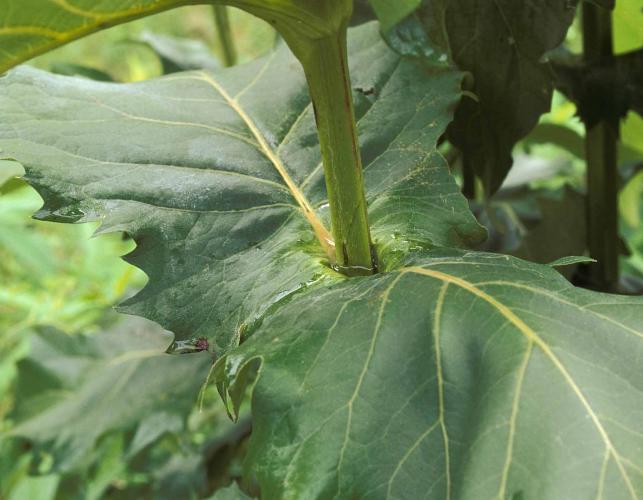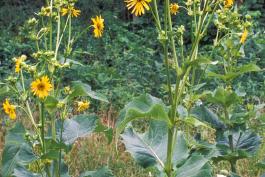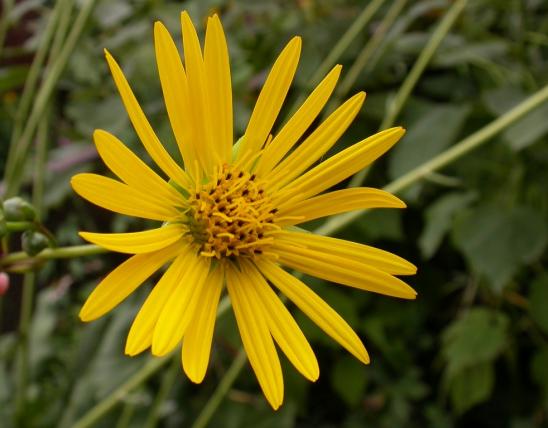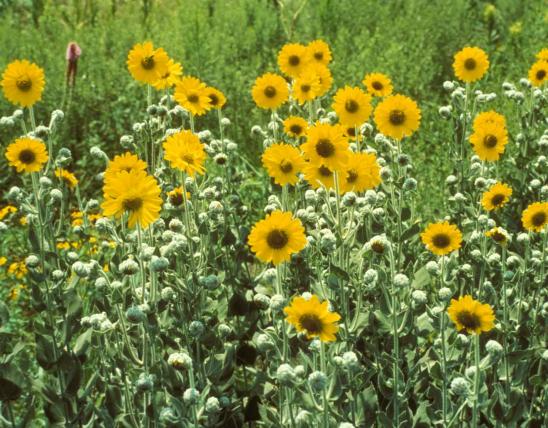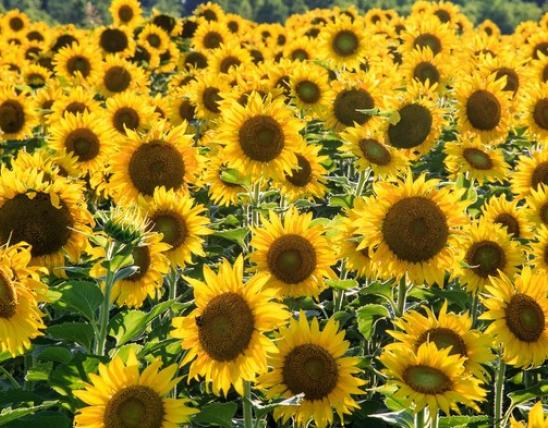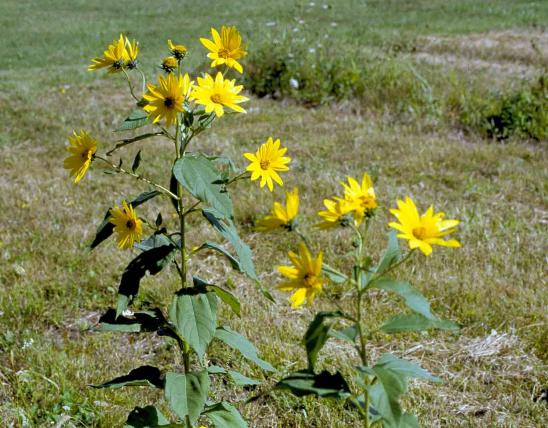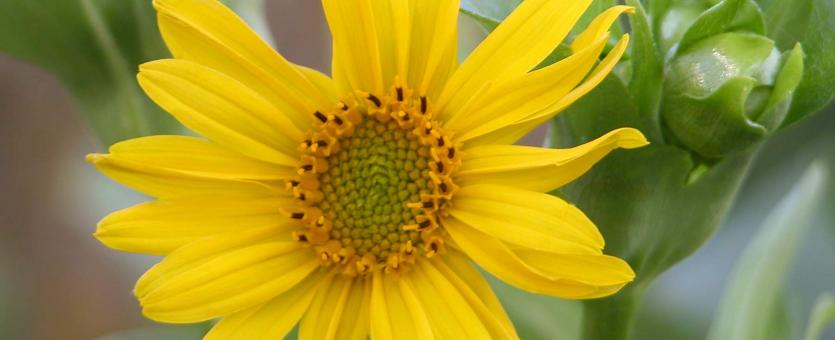
Cup plant is a tall perennial herb with square stems. Flowerheads numerous, to about 3 inches wide, yellow, with 18–35 ray flowers to 2 inches long. Blooms July–September. Leaves mostly opposite, to 1 foot long, with wavy, coarsely toothed margins (not lobed), rough on both sides, oval to triangular, covered with dots. Bases of opposite leaves are joined around the stem, forming a leafy cup that holds water.
Similar species: There are 6 Silphium species recorded for Missouri. Of these, cup plant, starry rosinweed (S. asteriscus), rosinweed (S. integrifolium), compass plant (S. laciniatum), and prairie dock (S. terebinthinaceum) are relatively common. Cup plant is identified by its square stems and unlobed leaves that join to form cups around the stem.
Height: 4 to 8 feet.

Scattered nearly statewide; uncommon in the Mississippi Lowlands.
Habitat and Conservation
Occurs on banks of streams and rivers, bottomland forests, and margins of ponds and lakes; also along edges of crop fields, railroads, and roadsides. Look for it in low areas near water and waste places. To some people, this species is a common weed; in fact, is considered a noxious plant in Connecticut. It is not problematic in Missouri. Some people cultivate it as a coarse, tall background plant in native wildflower gardens. In Michigan, it is classified as threatened.
Status
It’s not an accident that rosinweeds are in their own genus, Silphium, and not in the genus Helianthus (sunflowers). Yet some of them look much alike. How can you tell the difference? The disk florets in rosinweeds are essentially staminate (male) and therefore don’t create seeds, just pollen; but the disk florets in sunflowers, as most of us know, create seeds. The petal-like ray florets in rosinweeds are pistillate (female) and turn into seeds, while those in sunflowers are sterile.
Human Connections
Silphiums are called rosinweeds because of the gummy resin that oozes from damaged tissues, which was used by Native Americans and pioneers as a kind of chewing gum. Indians also used these plants for a variety of medicinal applications. The name carpenter’s weed alludes to the square stems.
Ecosystem Connections
Many insects visit and pollinate the flowers. Birds, including goldfinches, eat the seeds and sip water collected in the leaf cups. Many animals find shelter in this plant’s dense colonies. A variety of wasps are obliged to deposit eggs in rosinweeds; their gall-forming larvae grow in the stems.



